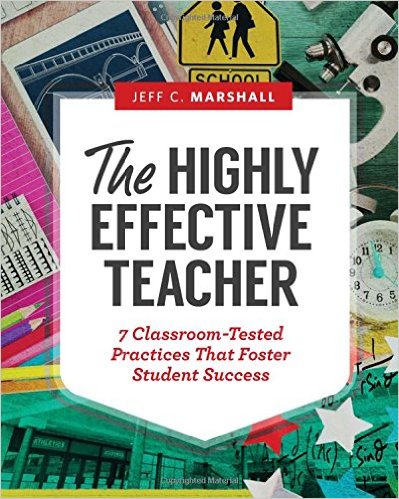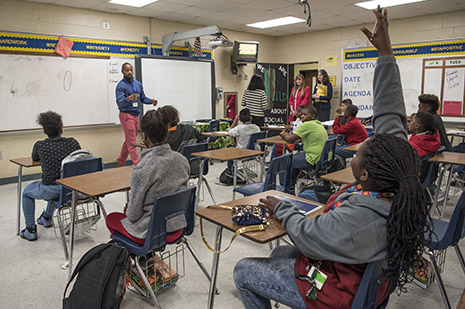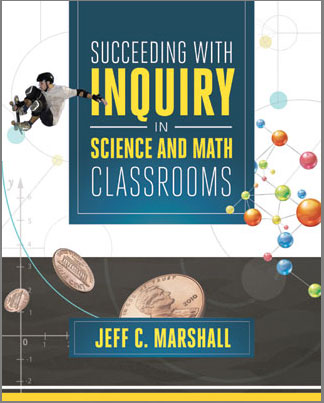Resources
TIPS (Teacher Intentionality of Practice Scale)

TIPS (Teacher Intentionality of Practice Scale) measures 7 research-based, classroom-tested teacher controllable actions that lead to greater student success. TIPS descriptive rubric is written so that Level 3 (proficiency) or above is the target for all K-12 teachers in all disciplines. TIPS is designed to guide teacher professional development and can be used as a measure for teacher effectiveness.
The following resources are available:
- Book
- Needs Assessment
- PDF version of TIPS
- Consulting Support
- Articles regarding TIPS

Book: The Highly Effective Teacher: 7 Classroom-Tested Practices That Foster Student Success
TIPS Needs Assessment
TIPS Needs Assessment helps teachers and programs identify where their greatest needs and greatest strengths reside relative to the 7 core indicators found on TIPS. For details in accessing the instrument, please contact Jeff Marshall, marsha9@clemson.edu for details.
PDF: TIPS is available as PDF file for individuals or groups to print and use as needed. Note that the PDF may not always display properly in some browsers, so save the file after opening to view properly. Download PDF. Please use proper citations if you use the instrument: TIPS is copyrighted. All rights reserved. Marshall, J. C.; Alston, D. M.; & Smart, J. B. (2015). TIPS: Teacher Intentionality of Practice Scale. Retrieved from Clemson University’s Server.
Consulting Support: For additional guidance relating to professional development or specific research projects relating to TIPS and/or teacher effectiveness, please contact Jeff Marshall directly.
Articles regarding TIPS:
Marshall, J. C. (2016) The Highly Effective Teacher: 7 Classroom-Tested Practices That Foster Student Success. Alexandria, VA: ASCD.
Marshall, J. C., Smart, J. B., & Alston, D. M. (2016). Development and validation of Teacher Intentionality of Practice Scale (TIPS): A measure to evaluate and scaffold professional development. Teaching and Teacher Education, 59, 159-168. doi:10.1016/j.tate.2016.05.007
EQUIP Instrument (Electronic Quality of Inquiry Protocol)

The EQUIP (Electronic Quality of Inquiry Protocol) is designed to measure the quantity and quality of inquiry instruction being facilitated in K-12 math and science classrooms. The instrument does not seek to measure all forms of quality instruction–only those that are inquiry-based in nature.
EQUIP is available for both teachers and researchers to use in their work. We welcome any thoughts and comments that you may have regarding the usefulness of EQUIP and recommendations for future improvements.
The following resources are available:
- Book
- Webinar to orient new users
- PDF version of EQUIP is available for download
- Consulting Support
- Articles regarding EQUIP
Book: Succeeding with Inquiry in Science and Math Classrooms.
Webinar A webinar is available to provide an overview of EQUIP. Select the EQUIP Webinar link to view.
PDF EQUIP is available as PDF file for individuals or groups to print and use as needed. Note that the PDF may not always display properly in some browsers, so save the file after opening to view properly. Download PDF. Please use proper citations if you use the instrument: EQUIP is copyrighted by Inquiry in Motion (2009). All rights reserved. Marshall, J. C., Horton, B., Smart, J., & Llewellyn, D. (2009). EQUIP: Electronic Quality of Inquiry Protocol: Retrieved from Clemson University’s Inquiry in Motion Institute.
Consulting Support: For additional guidance relating to professional development or specific research projects relating to EQUIP and/or inquiry-based instruction, please contact Jeff Marshall directly.
Publications related to EQUIP:
Marshall, J. C., Smart, J. B., & Alston, D. M. (2016). Inquiry-Based Instruction: A Possible Solution to Improving Student Learning of Both Science Concepts and Scientific Practices. International Journal for Science and Mathematics Education.
Marshall, J. C., & Alston, D. M. (2014). Effective, sustained inquiry-based instruction promotes higher science proficiency among all groups: A five-year analysis. Journal of Science Teacher Education, 25(7), 807-821. doi: 10.1007/s10972-014-9401-4
Marshall, J. C., Smart, J., Lotter, C., & Sirbu, C. (2011). Comparative analysis of two inquiry observational protocols: Striving to better understand the quality of teacher facilitated inquiry-based instruction. School Science and Mathematics, 111(6), 306-315.
Marshall, J. C., & Horton, R. M. (2011). The relationship of teacher facilitated inquiry-based instruction to student higher-order thinking. School Science and Mathematics, 111(3), 93-101.
Marshall, J. C., Smart, J., & Horton, R. M. (2010). The design and validation of EQUIP: An instrument to assess inquiry-based instruction. International Journal of Science and Mathematics Education, 8(2), 299-321.
Marshall, J. C., Horton, B., & White, C. (2009). EQUIPping teachers: A protocol to guide and improve inquiry-based instruction. The Science Teacher, 76(4), 46-53.
4E x 2 Instructional Model

The 4E x 2 Instructional Model was designed to unite three major learning constructs (inquiry instruction, formative assessment, and reflective practice) that have all been shown to improve learning. When well integrated, these learning constructs help facilitate deeper teaching and more powerful learning experiences. All the lessons, designed and available under Lesson Plans, use the 4E x 2 Model.
Theoretical paper for the 4E x 2 Instructional Model
Marshall, J. C., Horton, B., & Smart, J. (In Press). 4E x 2 Instructional Model: Uniting three learning constructs to improve praxis in science and mathematics classrooms. Journal of Science Teacher Education.
The webinar below on the 4E x 2 Instructional Model provides a brief overview of the Model for teachers and researchers.

